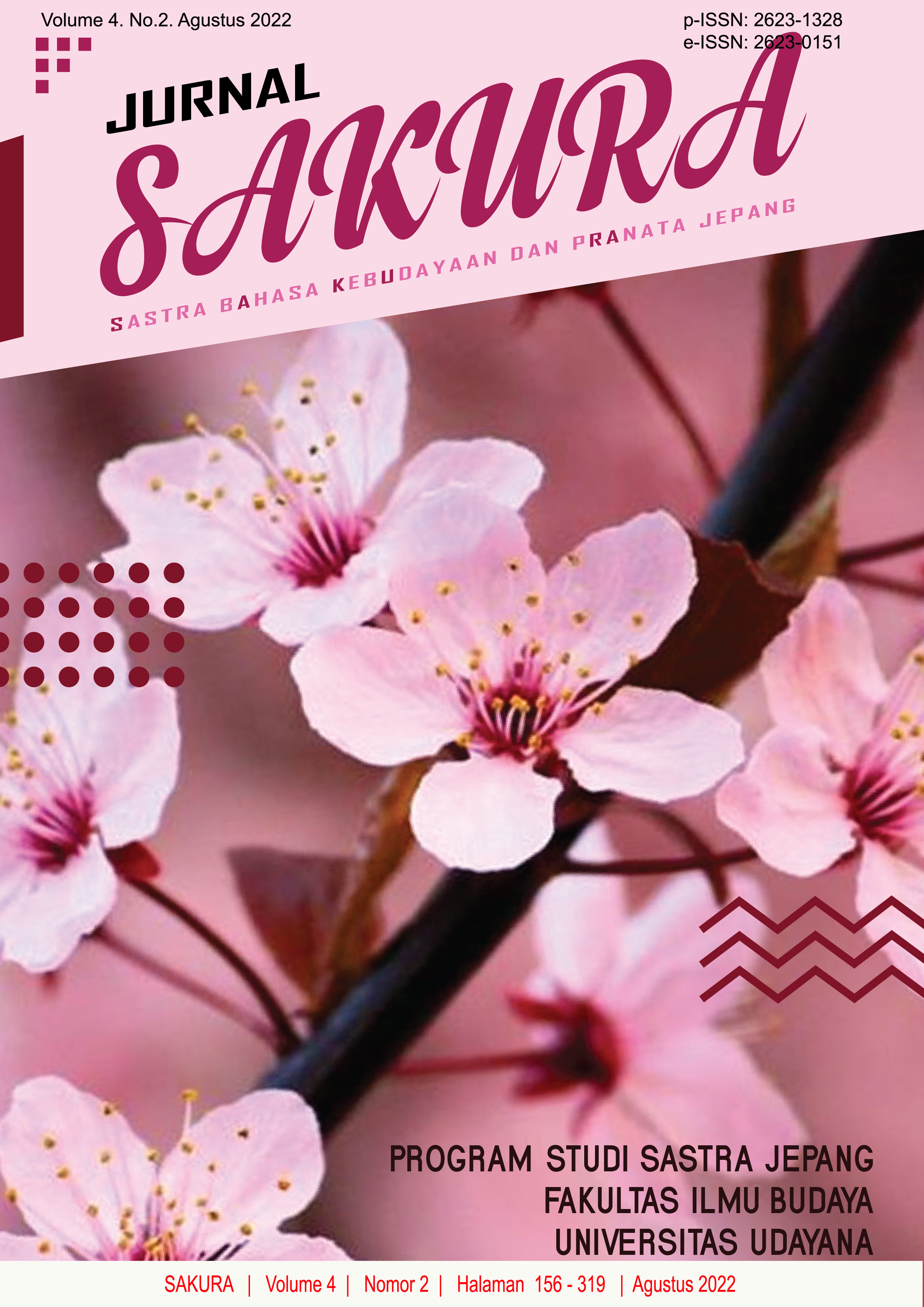Pujian dan Respon Pujian Sebagai Representasi Konsep Sosial dalam Perusahaan Jepang
Abstract
This article about compliments and compliment responses is an important part that is often used to facilitate communication, especially in the realm of Japanese companies or offices. This study aims to determine compliments and compliment responses as a representation of social concepts that apply in Japanese companies or offices in the Japanese drama entitled Eigyo Bucho Kira Natsuko. This study uses several theories related to compliments or compliment responses, namely Manes and Wolfson on the topic and function of compliment, and Herbert regarding the classification of compliment responses. In addition, this study also discusses the strategies used by the characters in the drama to respond to the compliment they receive. The social concepts represented in compliments and compliment responses are 1) sempai and kohai; 2) oyabun and kobun. The social concept adopted in the realm of Japanese companies provides an understanding and description of the strong culture in the Japanese corporate structure itself.
Downloads
References
Dirgayasa, I. W. (2015) ‘The Compliment: Its Concepts, Functions, Common Topics, and Typical Responses in Communication’, in ISELT-3, pp. 227–232.
Homma, M. and Yukawa, K. (2008) Home hotoba waakubukku. 1st edn. Tokyo: PHP.
Mahsun, M. S. (2005) Metode Penelitian Bahasa.
Nakane, C. (1981) Masyarakat Jepang. 1981st edn. Jakarta: Penerbit Sinar Harapan.
Noguchi, T. et al. (2010) Keys to the Japanese Heart and Soul. 20th edn. Tokyo: Kodansha International Ltd.
Purnomo, A. P. (2015) ‘Compliments and Compliment Responses Used By English Teacher Association’, Thesis, p. 17.
Shinmura, I. (2011) Koujien Dai Roppan. Tokyo: Iwanami.
Sudaryanto (2015) Metode dan Aneka Teknik Analisis Bahasa.
Suzuki, R. (2002) ‘褒めの返答に対する褒め提示側の印象度分析’.
Wu, L. (2008) ‘Gender based differences in compliments: The American comedy TV series’, Ugly Betty, pp. 499–508. Available at: http://www.diva-portal.org/smash/get/diva2:224605/.













